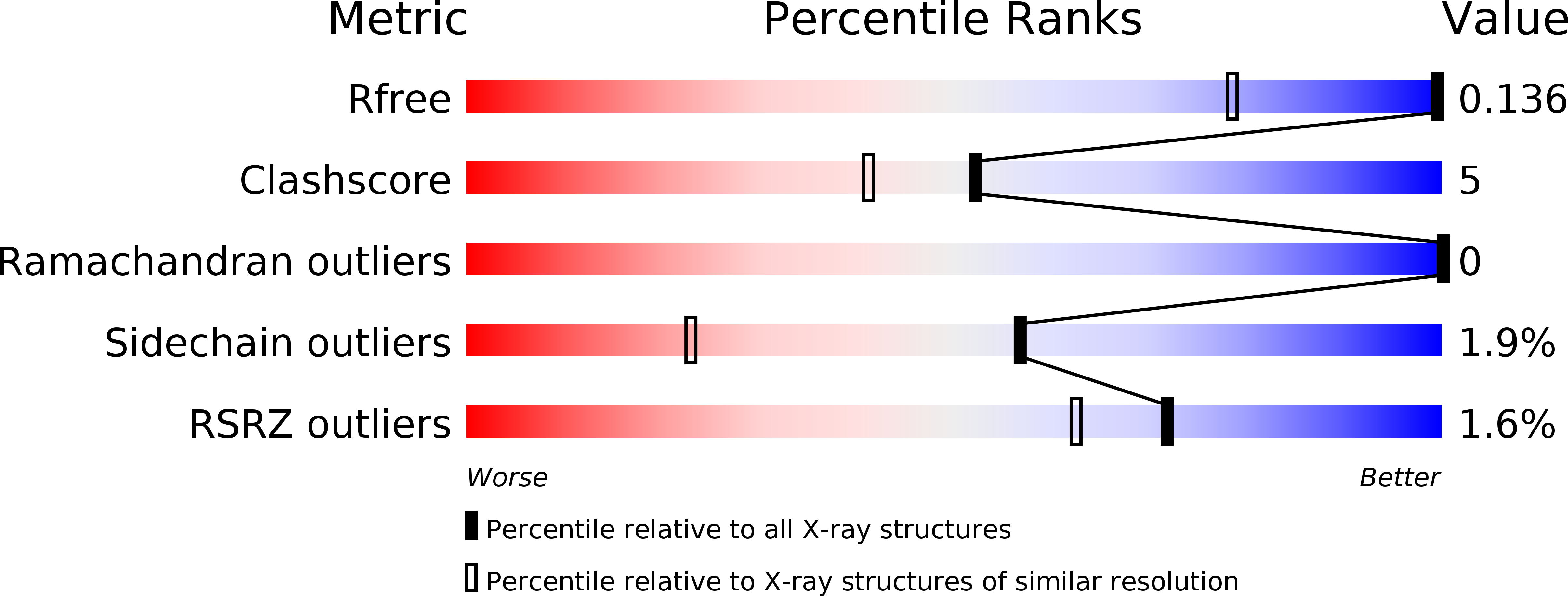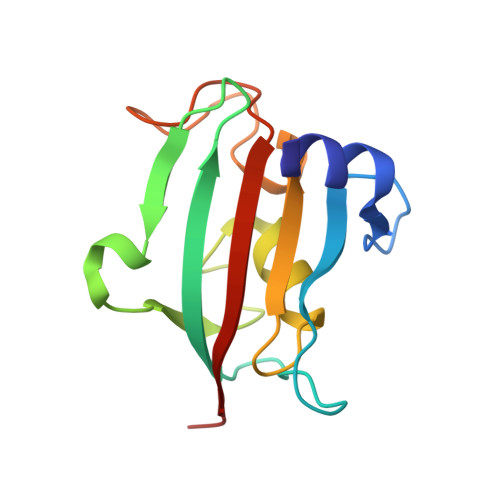Chemogenomic Profiling of Human and Microbial FK506-Binding Proteins.
Pomplun, S., Sippel, C., Hahle, A., Tay, D., Shima, K., Klages, A., Unal, C.M., Riess, B., Toh, H.T., Hansen, G., Yoon, H.S., Bracher, A., Preiser, P., Rupp, J., Steinert, M., Hausch, F.(2018) J Med Chem 61: 3660-3673
- PubMed: 29578710
- DOI: https://doi.org/10.1021/acs.jmedchem.8b00137
- Primary Citation of Related Structures:
5OBK - PubMed Abstract:
FK506-binding proteins (FKBPs) are evolutionarily conserved proteins that display peptidyl-prolyl isomerase activities and act as coreceptors for immunosuppressants. Microbial macrophage-infectivity-potentiator (Mip)-type FKBPs can enhance infectivity. However, developing druglike ligands for FKBPs or Mips has proven difficult, and many FKBPs and Mips still lack biologically useful ligands. To explore the scope and potential of C 5 -substituted [4.3.1]-aza-bicyclic sulfonamides as a broadly applicable class of FKBP inhibitors, we developed a new synthesis method for the bicyclic core scaffold and used it to prepare an FKBP- and Mip-focused library. This allowed us to perform a systematic structure-activity-relationship analysis across key human FKBPs and microbial Mips, yielding highly improved inhibitors for all the FKBPs studied. A cocrystal structure confirmed the molecular-binding mode of the core structure and explained the affinity gained as a result of the preferred substituents. The best FKBP and Mip ligands showed promising antimalarial, antileginonellal, and antichlamydial properties in cellular models of infectivity, suggesting that substituted [4.3.1]-aza-bicyclic sulfonamides could be a novel class of anti-infectives.
Organizational Affiliation:
Department of Translational Research in Psychiatry , Max Planck Institute of Psychiatry , 80804 Munich , Germany.















